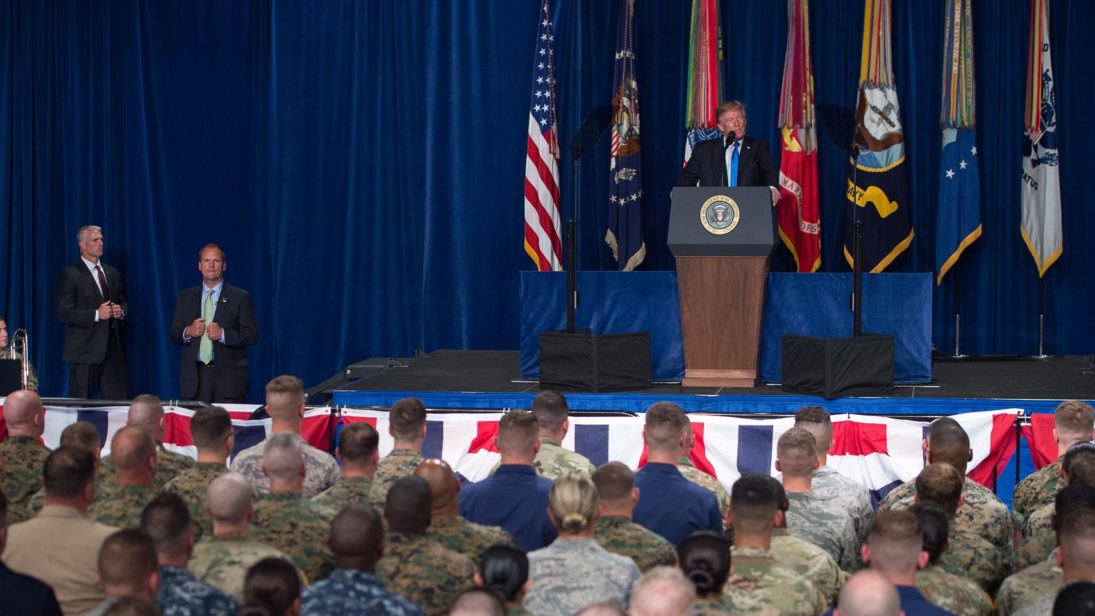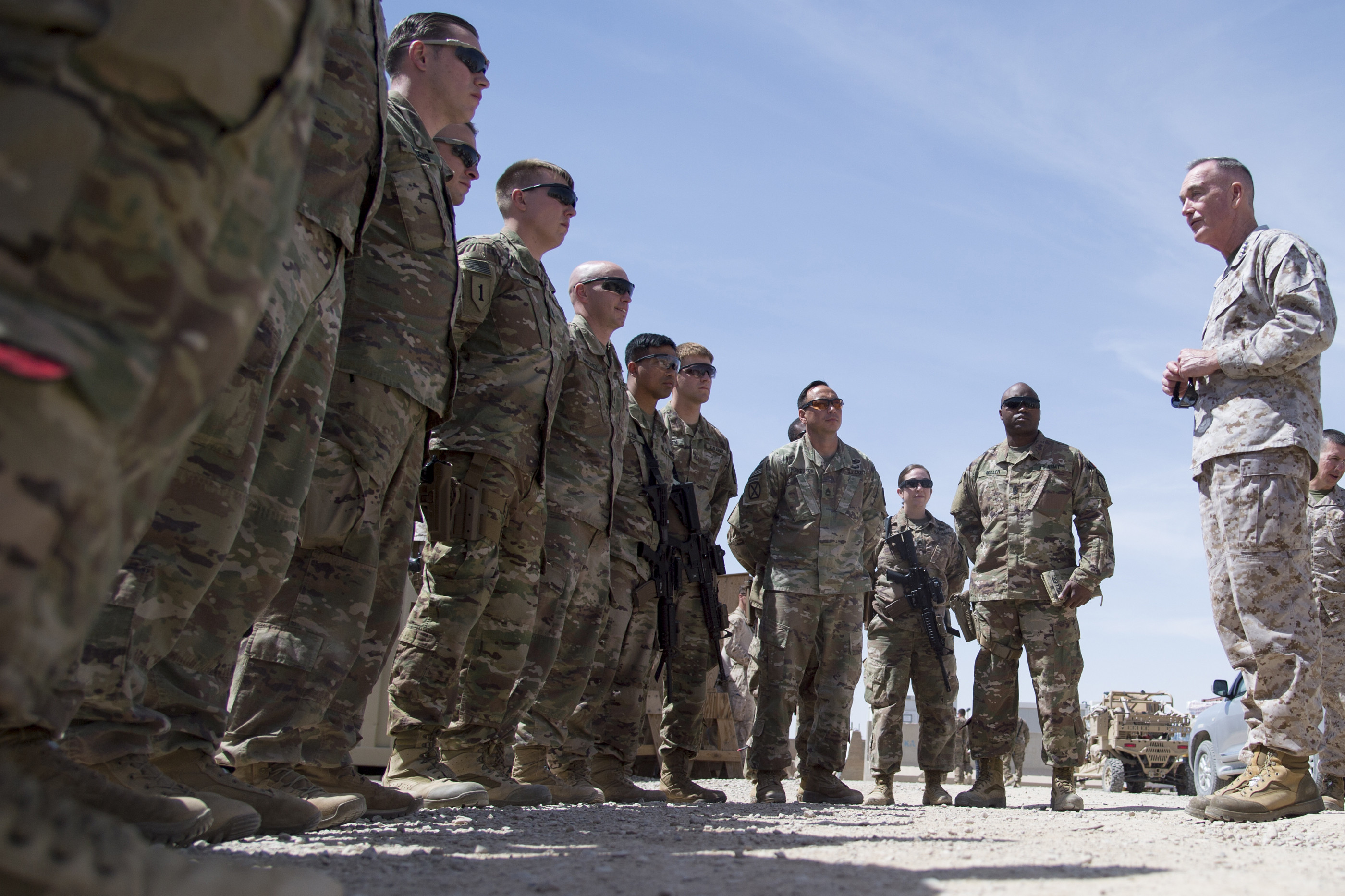
President Trump, in August 2017, outlined his Administration’s strategy for Afghanistan and South Asia, noting that, “we have inherited a challenging and troubling situation in Afghanistan and South Asia, but we do not have the luxury of going back in time and making different or better decisions.” Despite his initial instincts to pull out of a 17-year war that has frustrated the American people, our allies, regional countries, and particularly the President himself, the strategy clung to the same overarching logic of both the Bush and Obama administrations: stopping the resurgence of terrorist safe havens that threaten America and preventing nuclear weapons and materials from coming into the hands of those terrorists. These twin interests not only keep our troops in Afghanistan but also led President Trump to support a modest troop increase. However, it is not clear that the current U.S. strategy is achieving the stated goals of counterterrorism and nuclear security.
In the South Asian Voices series “Trump’s South Asia Strategy: One Year Later,” four contributing scholars explore the varying impact of the strategy on Afghanistan and countries in the region. They are unified in their assessment that the new strategy has not improved conditions in Afghanistan, nor has it helped the U.S. relationship with either Pakistan or India. Instead, one year later there seems to be more chaos and unpredictability about U.S. intentions in the region and no clear exit strategy for the United States.
They are unified in their assessment that the new strategy has not improved conditions in Afghanistan, nor has it helped the U.S. relationship with either Pakistan or India. Instead, one year later there seems to be more chaos and unpredictability about U.S. intentions in the region and no clear exit strategy for the United States.
The South Asia strategy, which is largely an Afghanistan strategy, gave more autonomy to the Pentagon and rhetorically switched to a conditions-based rather than a time-based approach. The broad contours of the strategy have allowed various interests within the executive branch to interpret the strategy through their own specific institutional lens. Everyone acknowledges the need for a political settlement to allow for an honorable U.S. exit, but as Bismellah Alizada notes, in the past year the United States “has vacillated between uncompromising rhetoric like ‘reconcile or die’ and overly-compromising actions such as withdrawing U.S.-backed Afghan troops from sparsely populated districts, essentially handing Afghanistan rural areas over to the Taliban.” As all the authors admit, despite increased U.S. airstrikes the Afghan Taliban has shown strength and made territorial gains within Afghanistan. This has not made a peace process any easier for the Afghan government, and in fact it has pushed the region to continue to hedge its bets that the Taliban may in fact gain power after an eventual U.S. withdrawal. Rather than forecasting a Taliban takeover, one may argue that the conditions are closer to those of a prolonged stalemate—one in which neither side wants to admit that it is neither going to win militarily nor lose. Instead the status quo continues to be politically tenable for all major players, especially the United States. The deteriorating security conditions under such a stalemate continue to punish Afghan civilians.

Uzair Kayani and Sikander Shah write about the impact of the South Asia strategy on the U.S.-Pakistan relationship, arguing that the United States is at risk of becoming irrelevant in Pakistan. Likewise, one could argue that in Washington, Pakistan is only seen through the prism of Taliban safe havens. One year into the strategy, the U.S.-Pakistan relationship is not necessarily the worst it has ever been but there is growing indifference to the lack of a constructive relationship. Kayani and Shah argue that this is dangerous for both national security and geopolitical objectives. However, until there is a resolution for the United States of the military conflict in Afghanistan, there will likely be no normalization of U.S.-Pakistan relations. The immediate thorns in the relationship will continue to outweigh any longer term strategic concerns.
The U.S. ‘strategic shift’ towards India is still largely rhetorical: India is not a deciding factor in the Afghan endgame, and the reality of India’s central role in the U.S. Indo-Pacific strategy is turning out to be far more constrained than previously imagined.
Shreyas Deshmukh explores the impact of the Afghanistan strategy on U.S.-India relations, and he accurately assesses that the strategy yielded no paradigm shift in Indian policy towards Afghanistan. The mention of India in the President Trump’s South Asia strategy speech sent shock waves through many capitals, especially Islamabad and Beijing. But in fact, Deshmukh’s observation that Trump’s mention of India was due to his desire not to fund the development of Afghanistan’s single-handedly is precisely why the mention did not yield any actual change in policy. India has made the prudent decision to continue to focus on development in Afghanistan, eschewing any increased military assistance. This decision not only dampens Pakistani ire, but also is far more politically acceptable within India. The U.S. “strategic shift” towards India is still largely rhetorical: India is not a deciding factor in the Afghan endgame, and the reality of India’s central role in the U.S. Indo-Pacific strategy is turning out to be far more constrained than previously imagined.
One year on, the South Asia strategy has not pushed regional actors to favor U.S. national security outcomes in Afghanistan. More importantly, the security situation in Afghanistan continues to decline, the Taliban have a significant internal safe haven, and the Afghan political situation remains chaotic on the eve of 2018 parliamentary and 2019 presidential elections. Peace talks and an eventual political settlement are still the best hope for resolution of the Afghan and regional conflict. While there remain significant factors limiting the viability of peace talks, as Neha Dwivedi notes, this year has been marked by events that have catalyzed support for a peace process. The United States has been supportive of a peace process since 2009. However, this year the Trump administration took the bold step of publicly acknowledging direct talks with the Taliban. This significant move forces the Taliban to acknowledge that it is their reluctance to engage that continues this brutal war. Afghan President Ashraf Ghani also, in coordination with the United States, made a significant peace offer to the Taliban in February and declared a ceasefire in June during the Eid-al-Fitr holiday, which was reciprocated by the Taliban. These events and more organic grassroots ones, such as the Afghan peace marchers and the Ulema Conference for Peace, have created political pressure and momentum in support of a peace process. The United States, Afghanistan, and regional countries should use this momentum to push all sides to the negotiating table and find a political settlement that can address the needs of the Afghan people, regional actors, and the international community.
Editor’s Note: South Asian Voices (SAV) endeavors to ensure its contributors are influencing policy debates in India, Pakistan, and the United States. To this end, our feature Experts Ki Rai periodically has experienced South Asia specialists weigh-in on contributors’ analysis, in the hope of continuing to advance meaningful dialogue on the subcontinent and beyond. In this edition of Experts ki Rai, Tamanna Salikuddin of the United States Institute of Peace responds to SAV’s series “Trump’s South Asia Strategy: One Year Later.” Read the series here.
***
Click here to read this article in Urdu.
Image 1: James N. Mattis via Flickr
Image 2: U.S. Department of Defense Website


